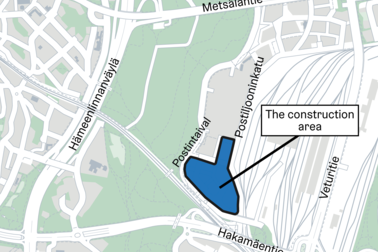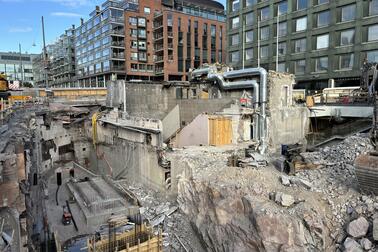
Compared to agricultural land, construction sites generate 10–20 times more sediment pollution that ends up in waterbodies. The guidelines for construction site water management, jointly developed by HSY (Helsinki Region Environmental Services Authority) and the cities of Espoo, Helsinki, Kauniainen and Vantaa, now provide limit values for pollutants and methods for managing construction site waters. The need is urgent, given the hundreds of construction projects carried out in the capital region each year.
The new guidelines for construction site water management have been developed in response to a common need and at the request of the construction industry. The environmental impacts of the construction industry are significant, as it accounts for 30% of the world’s waste and 50% of natural resource consumption. Water treatment is just part of the construction sector’s sustainability efforts.
“By following the guidelines, construction sites in the capital region will become pioneers in on-site water management and sustainable construction. Customers, investors and neighbourhoods are interested in the sustainability of construction sites. Not only does harm prevention benefit the environment, it is also an important part of image and risk management,” says Saara Olsen, Head of Nature and Environmental Information at the City of Espoo.
Neglecting water management at construction sites may lead to significant costs in addition to harmful environmental impacts. For example, cleaning stormwater pipes from untreated construction site water can cost the contractor tens of thousands of euros. Every year, authorities in the capital region are informed of dozens of cases of neglect regarding construction site water management.
Waters from construction sites affect the spawning streams of endangered trout and the state of the Baltic Sea
Although individual construction sites may not be in place for long, the sites often pollute the same surface waters. Untreated on-site water is conveyed via stormwater drains or ditches to the nearest waterbody, which may be surrounded by several different construction sites. If water is not properly treated, oils, heavy metals, sediment (soil particles), and other substances end up in waterbodies. Sediment makes streams cloudy and prevents fish spawning and the growth of aquatic plants.
“Sediment is a problem especially for endangered trout, which live and spawn in many streams in the capital region,” says Sini-Pilvi Saarnio, Head of Environmental Inspection at the City of Helsinki.
Construction site waters can also carry nitrogen runoff from excavation sites to waterbodies. Nitrogen contributes to water eutrophication and exacerbates blue-green algae blooms in the Baltic Sea.
Effective management of construction site waters reduces point-source pollution of natural waters. This helps to preserve endangered species and restore their populations. In this way, the treatment of construction site water also helps to preserve the diversity of the aquatic environment.
Construction site water refers to water or sludge formed on construction sites, with the exception of wastewater generated in social and sanitary facilities in construction site cabins. Construction site water consists of rainwater, meltwater, soil water, and water used in construction, as well as water entering the construction site from outside the area. Construction site waters must not be conveyed into wastewater sewers, as large amounts of cold sediment-laden water can disrupt the functioning of sewers and wastewater treatment plants. This can lead to wastewater discharge within the sewer network and compromise the treatment efficiency at the wastewater treatment plant.


